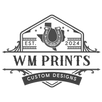The world of 3D printing has rapidly evolved from a cutting-edge novelty to a mainstream manufacturing process, offering unprecedented possibilities across various industries. By understanding the underlying science, we can appreciate how 3D printing works and its potential impact on manufacturing, medicine, art, and more.
What is 3D Printing?
3D printing, or additive manufacturing, involves creating three-dimensional objects from digital models. This process builds up an object layer by layer, using materials like plastic, resin, metal, or even biological cells. Unlike traditional subtractive manufacturing, where material is removed to create a shape, additive manufacturing adds material only where needed.
Key Technologies in 3D Printing
Fused Deposition Modeling (FDM):
FDM is one of the most widely used 3D printing technologies. It works by extruding thermoplastic filament through a heated nozzle, which deposits the material layer by layer. This method is popular for its accessibility and cost-effectiveness, making it ideal for prototyping and small-scale production.
Stereolithography (SLA):
SLA uses a laser to cure liquid resin into hardened plastic. This process is known for producing high-resolution prints with excellent surface quality. The precision of SLA printing makes it suitable for detailed models and intricate designs.
Selective Laser Sintering (SLS):
SLS involves the use of a laser to fuse powdered materials, such as nylon or metal, into solid structures. Due to its ability to produce strong and complex parts without the need for supports, SLS is widely used in industries like aerospace and automotive manufacturing.
Bioprinting:
Bioprinting applies 3D printing techniques to biological materials, creating structures like tissues and organs. This revolutionary technology holds promise for advances in regenerative medicine, by potentially eliminating the need for organ donors.
Applications in Everyday Life
3D printing is already transforming various fields:
- Medicine: Customized prosthetics and implants can be 3D printed to match patient specifications, improving both comfort and functionality.
- Architecture: Rapid prototyping of architectural models enables architects to quickly test and modify their designs.
- Education: Schools use 3D printers to enhance learning experiences, allowing students to turn theoretical concepts into tangible models.
Explore 3D Printing Products
For those interested in diving into the world of 3D printing, WM Prints offers several tools and accessories designed to enhance your printing experience. One such product is the Lyman Type Prep Tools Holder, which aids in organizing tools essential for post-processing and finishing your 3D prints. This holder helps maintain an efficient workspace as you refine your creations.
Conclusion
As the technology behind 3D printing continues to advance, its potential uses seem almost limitless. By understanding the science behind this technology, we can better appreciate its applications and look forward to even more groundbreaking innovations. Whether you're a hobbyist or a professional, explore the exciting possibilities 3D printing has to offer with the right tools and products.
For more information and tools to enhance your 3D printing journey, visit WM Prints.





